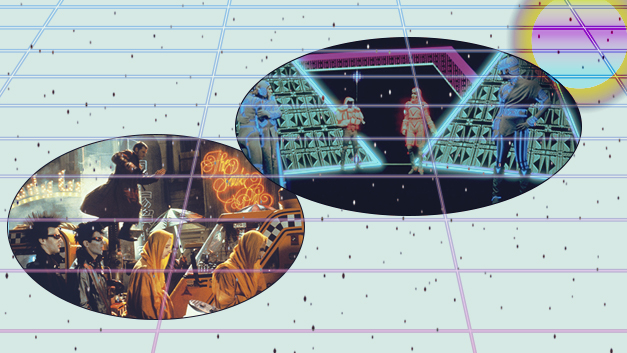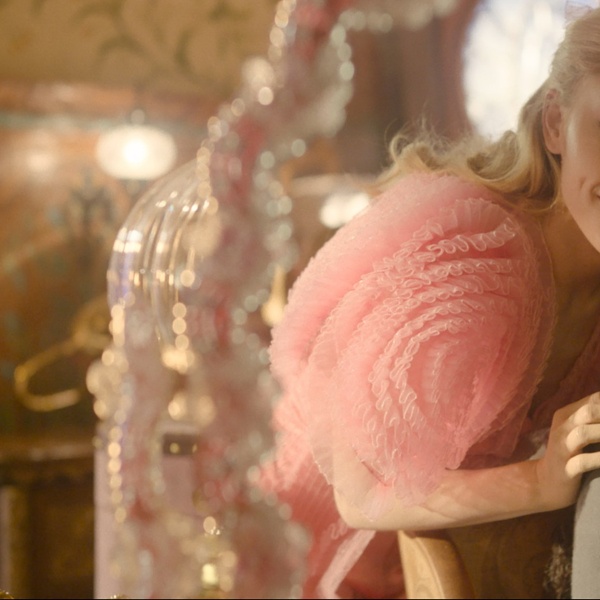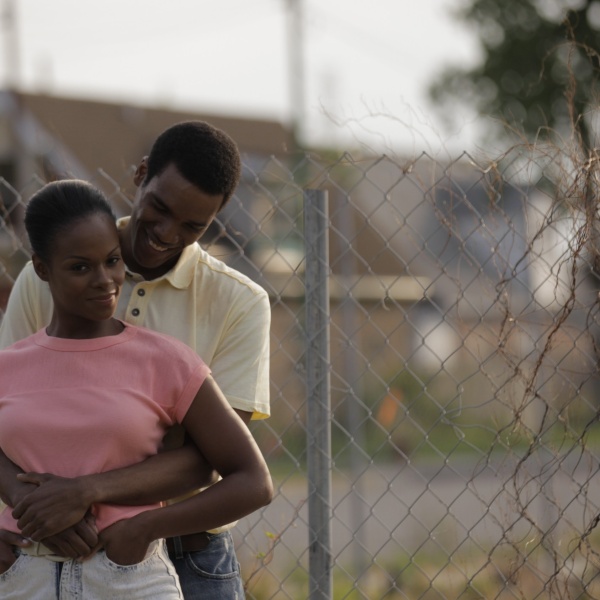
When Alfred Hitchcock fired the composer behind “Vertigo” and “Psycho” over creative differences during the production of “Torn Curtain” in May 1966, it was clear that film music was changing. Although Bernard Herrmann’s theremin-laden score for “The Day the Earth Stood Still” had changed the game, his rugged determination not to succumb to rock ‘n’ roll, jazz, or (God forbid) “theme tune” scores that were quickly becoming all the rage in Hollywood made him an enemy of serial pragmatist Hitchcock. They never worked together again.
Three months later, The Beatles released “Revolver,” with what The Village Voice called a “bent and pulverised sound” — and pop music had gone electronic. Amid times a-changin’, Herrmann dug his heels in. His final score a decade later, for “Taxi Driver,” is as classic as they come.
When the synthesizer again altered the sound of film music in the 1980s, Herrmann’s fingerprints were, ironically, all over it. The influence of “Taxi Driver” on Vangelis’ score for “Blade Runner” is clear. Herrmann’s lonely saxophone pierces through a dark ambience, and Vangelis’ high-pitched main theme similarly emerges from an echoey bass intro and thunderous percussion. You can see why: in both films, unlikely heroes emerge from rainswept downtrodden cities where people seem to have lost touch with their identities and existence.
Same ideas, different tools? Not quite.
Many of the synthesizer-driven scores that reshaped the sound of cinema in the ’80s are conventionally melodic, while other, more experimental scores speak a different musical language and helped filmmakers explore the idea that a soundtrack can serve a new function altogether. Either way, the synthesizer’s domination during the ’80s would change film music forever.
But it didn’t come easily.
Bach to the Future
Though they would come to redefine the sound of cinema in the ’80s, synthesizers were first used in movies in the early’70s; it was Stanley Kubrick’s idea. He heard Wendy Carlos’s 1968 album “Switched-On Bach,” an ingenious synth adaptation of the great German composer’s best-known music that offended virtually the entire classical music community, and sold shedloads. (Imagine a highly intellectual version of Walter Murphy’s disco classic “A Fifth of Beethoven” from the “Saturday Night Fever” soundtrack.)
“Switched-On Bach” won three Grammys and stayed on top of Billboard’s classical albums chart for three whole years. Brian Wilson said it was “one of the most electrifying albums” he’d ever heard. Carlos told New Age Voice in 1999 that she wanted to take electronic music away from its stuffy origins in ’50s sci-fi. She said: “I thought what ought to be done was obvious, to use the technology for appealing music you could really listen to.”

Helpfully, “Switched-On Bach” fit with Kubrick’s own iconoclastic but classic (icono-classic?) vision for “A Clockwork Orange.” And after his “2001” ran well over budget and behind schedule, with Kubrick disposing of Alex North’s orchestral score after it was recorded (North didn’t find out till he saw the film), one artist on one instrument seemed a sensible cost-saving measure.
Carlos was enlisted to work her magic, adapting some 17th century English funeral music for an appropriately unnerving opening theme, which crescendos after Alex DeLarge first says “a bit of the old ultraviolence…” at the Korova Milkbar, death stare in tow. Carlos also arranged the Fourth Movement from Beethoven’s “Ninth for March” from “A Clockwork Orange,” part of which plays as Alex is tortured with the Ludovico Technique. Carlos’ conception of “Ode to Joy” is empty, an intentionally soulless reading of an uplifting piece that — like the technique — removes all its humanity.
“A Clockwork Orange” was in many ways ahead of its time, and Kubrick’s big bet on the synth was never going to be its main talking point. But one important lesson from Carlos and Kubrick’s collaboration was that synths can sound scary, and not classic Hollywood scary, like Herrmann’s jabbing violins on “Psycho” or John Williams’ two-note tuba theme for “Jaws.” The hollow electronic sound and funereal melodies of “A Clockwork Orange” are depersonalized and dystopian, creating their own, real sense of dread. No music could illustrate Anthony Burgess’ world better.
William Friedkin got the memo: he used the chirpy opening bars of Mike Oldfield’s landmark synthesizer-prog rock record “Tubular Bells” to foreshadow supernatural chaos in The Exorcist. The film was such a hit that it turned “Tubular Bells” into a phenomenon. And John Carpenter’s score for “Halloween,” which starts with a light piano motif before the synth kicks in, combined acoustic and electronic instruments as effectively as anything that decade. That “The Exorcist” and “Halloween” both made historic margins at the box office ensured mass awareness of the new sound, even if John Williams’ “Star Wars” score and Jerry Goldsmith’s theme for “Chinatown” — which was written in ten days and recorded in two — justified the studios’ continued enthusiasm for the orchestra.
It wouldn’t be till Hollywood’s music royalty got involved that the synth would truly usurp it.
Settling scores
Eager to stay employed in an era of studio cutbacks on ’60s-era big-scale compositions, a group of well-established composers, realiing the opportunities for individual creativity that came with access to hundreds of instruments on a single machine, experimented their way to new sounds.
Ennio Morricone’s score for the “Exorcist” sequel was prog rock with synth trimmings, while “Lawrence of Arabia” composer Maurice Jarre used synths on his slow-paced, romantic score for “The Year of Living Dangerously,” and never looked back. (It helped that his son, Jean-Michel, had put jetpacks on the synth revolution with the genre-spanning classic album “Oxygène” in 1976.) And Carlos’ work on “The Shining” saw her handed new opportunities in Hollywood: her trippy soundtrack for “Tron” was the product of analog and new digital synthesizers working together.

Even arch-traditionalist John Barry — whose old-timey credentials were so strong that he was hired to recreate silent-era classics for Chaplin and roaring ’20s jazz standards for “The Cotton Club” — played the original Moog synthesizer for a few bars of his theme for the 1979 pulpy sci-fi flick “The Black Hole.”
But most Old Hollywood composers, like Herrmann, showed only a distant curiosity. Henry Mancini offered a representative opinion when he told The LA Times at the acme of the synth in 1986: “It’s affected all areas of music. There’s nothing you can do except pick it up and find out how to use it. I get with the boys I know who do know synthesizers, and I can work it out.”
It would be new voices like the German electronic band Tangerine Dream and Italy’s “father of disco” Giorgio Moroder who disregarded what the score had originally been for — and revolutionized film music. “Beach Theme,” the key track on Tangerine Dream’s atmospheric synth-only music for “Thief,” fades into a chorus that’s borderline sentimental, expressing an outward emotional power for which our protagonist Frank (James Caan) lacks the vocabulary. Foreigner could’ve made a number-one hit singing over it. New York Times critic Vincent Canby panned the film as “loaded with so-called production values [and] undone by its pretensions”, adding: “The music by Tangerine Dream sounds as if it wanted to have a life of its own…” Tangerine Dream would say that was precisely the point.

And Hollywood was paying attention — sort of. Moroder’s seminal synth score for “Midnight Express” won the Oscar in 1978, defeating Hollywood staples John Williams (for “Superman,” no less), Morricone, Jerry Goldsmith, and Dave Grusin.
But this was no case of the Academy being up-to-date, according to “Midnight Express” producer, David Puttnam. He told author Terry Atkinson in 1982: “I’m quite convinced that we won the Academy Award because there was absolute hysteria the year before when ‘Saturday Night Fever’ didn’t even get nominated for its score. Too many questions were asked of the Academy’s attitude to modern music. So, to an extent, Giorgio had the Bee Gees to thank for that.”
The synth score’s mainstream breakthrough came on a different Puttnam project. If Carlos and Kubrick had put synths on the radar, Vangelis ensured that they would rule the roost. His music for “Chariots of Fire,” a low-budget period drama by a debutant director with virtually no recognizable stars (unless you count Sir John Gielgud), served as a defibrillator, both for Hugh Hudson’s film and for the synth movement.
Unlike Tangerine Dream, Kraftwerk, and Moroder, who believed the synth could create a different kind of musician and a new frontier, Vangelis was convinced that traditional composers should embrace the synth. He told Polyphony magazine in 1983 that their differences were overstated. He said: “With the violin you have a bow and the string that produces sound. With the synthesizer you need electric power to do the same thing. So what!”
Vangelis never changed his mind. In an interview months before his death in May 2022, he told Sound on Sound: “I don’t find any difference between what we call acoustic and electronic instruments. The word synthesizer comes from the Greek word synthesis, which means harmonious existence. This being the case, how would you feel if I call the symphony orchestra the first synthesizer?”

Vangelis had good reason to make the case for the art of the synth. But his scores make clear that he knew the different effects acoustic and electronic sounds could have. “Chariots of Fire” is, of course, all-electronic, but the more electronic-sounding parts of the synth are mostly used percussively. The main motif is played on a keyboard set to imitate an old-school piano. It’s a cautious, clever move from Vangelis that imbues the theme with emotional beats that were, in 1981, abundantly familiar. To play digital-sounding synth notes here would not have fit the language of mainstream film music. One year (and one Oscar) later, his “Blade Runner” score is more experimental — even if it’s still pure Hollywood, too.
As well as being the best-known synth score of all time, the music for “Chariots of Fire” also hints at part of why synths would go out of fashion by the end of the decade. Everyone remembers the iconic main reprise played as the young men run barefoot along a pebbly English beach; fewer recall the more jarring synth sounds in quieter scenes: sudden repetitions of single notes to create tension during training montages or lengthy downbeat sounds as our heroes suffer. Much of it is spectacular; some now, ironically, sounds a little stilted. Movies change; music changes quicker.
New toys
It wasn’t just Hollywood’s traditionalists who resisted the arrival of the synth or predicted its demise. Many musicians pointed out that the studios embraced the synthesizer because it allowed them to save money on musicians and recording studios. English composer Carl Davis told The Guardian that synthesizers lack “the heart” of a symphony orchestra, while music veteran Jeff Rona, known for his synthy video game scores, said “economics” had led to the use of electronic music on films where it wasn’t suited. In truth, this particular argument is a little weak, and certainly hard to prove.
Synth scores eventually required many people to play and produce as synthesizers became more sophisticated — and competition fiercer. Maurice Jarre said that his synth-only music for “Witness,” which is among the best of the decade, was more expensive to produce and took longer than any of his previous work. And in his Polyphony interview, Vangelis said: “I don’t think the synthesizer will put the flute out of business.” He was right.

The biggest takedown of electronic music scores was an aesthetic one that largely came from musicians themselves. Rick Wakeman, the frontman of English prog rock band Yes, said the quiet part out loud when he told the Sunday Telegraph in 1982 that he was baffled by Vangelis’ synthesizer work on “Chariots of Fire.” His reasoning was straightforward: “Many machines do have pre-set modes, and that it why most groups sound the same. … I was surprised at what he did with ‘Chariots.’”
Movies are subject to phases; music more so. As Hollywood rushed to deploy the synth, its currency among the edgy artists who’d first toyed with the new sound was quickly reduced. It didn’t help that the Yamaha DX7, the first fully digital synthesizer, sold well enough to rid the synth of any exoticism, its sound soon ubiquitous on pop charts of all genres. YouTube compilations of the “greatest hits” on which the keyboard was used are hours-long.
The DX7 was endorsed in one memorable 1983 magazine ad by Elton John, Quincy Jones, Michael McDonald and, yes, Jerry Goldsmith, who testified: “Yamaha digital keyboards have opened a new world of sound with colors I could imagine, but not express musically.” Goldsmith did not paint with those colors seven years later with his score for “Total Recall,” a career highlight, one of the best scores of the ’90s and exactly the kind of movie that would have had a synth-laden soundtrack if the synth was still in fashion.
Always a skeptic, slowly but surely, Goldsmith was joined by his peers. The revolution was over.
Can You Hear the Music
When David Fincher hired Trent Reznor and Atticus Ross to score “The Social Network,” his first request was a Wendy Carlos-style version of “In the Hall of the Mountain King” by late-19th century Norwegian composer Edvard Grieg. (Reznor told Pitchfork: “The Wendy Carlos thing threw me for a loop.”) Reznor and Ross’ score played a big role in reintroducing cinema to the synth in the 2010s, and its application wasn’t wildly different. On the otherwise conventional opener, “Hand Covers Bruise,” a whirring low-pitch synth indicates an unease that runs throughout the film. Its melody is played on piano, while the synth sets the climate.
Ludwig Göransson made a similar point describing his score for “Oppenheimer,” an encircling symphony that reaches a predictable but shattering climax. He told Vulture that the increasing use of synthesizers as the film goes on signifies a growing discomfort, adding: “I think the synth is the undercurrent of darkness that keeps dragging you down into the depths. There was something interesting with that — how that modern production symbolizes the dark clouds looming over him.”
Reznor, Ross, and Göransson are not alone. Many of Hollywood’s most celebrated composers now use the synth to set the mood. And just as the synth first arrived on the film scene as a tool of suspense, there it appears to have returned.



